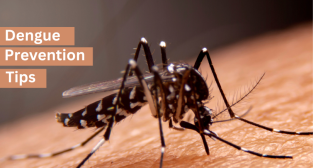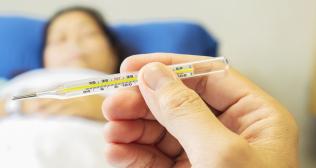
Understanding the Incubation Period of Diseases: What Happens Before Symptoms Appear
In the world of infectious diseases, timing is always critical. One of the most overlooked yet vital concepts is the incubation period; the silent interval between exposure to a pathogen and the first appearance of symptoms. This hidden phase not only determines how illnesses spread but also influences public health responses, treatment decisions, and containment strategies.
What Is the Incubation Period?
The incubation period refers to the time between the entry of a virus, bacteria, or parasite into the body and the onset of noticeable symptoms. During this phase, the pathogen is actively multiplying or spreading internally, often without the host realizing it.
This period can vary widely; from mere hours to several weeks or even months; depending on the type of disease. For example, the incubation period of the flu virus tends to be short, usually 1 to 4 days. In contrast, diseases like HIV may remain dormant for years before symptoms manifest.
Why Understanding It Matters?
Knowing the incubation timeline is essential for:
- Infection Control: Helps in determining when an exposed person becomes contagious.
- Testing Strategy: Influences the ideal window for diagnostic tests.
- Quarantine Measures: Defines how long exposed individuals should isolate to prevent transmission.
- Early Intervention: Aids in anticipating and managing early symptoms, possibly limiting disease severity.
Mechanisms at Play During Incubation
During incubation, several complex biological interactions occur. Once the pathogen breaches the body's defenses, it begins to replicate and colonize target tissues. The immune system detects these changes, but symptoms don’t show up immediately because it takes time for either the pathogen load to reach a threshold or the immune response to become pronounced.
This stealth mode is what makes many infectious diseases hard to detect early. By the time symptoms emerge, a person may have unknowingly exposed others, making virus incubation period data critical for outbreak modeling and prevention.
Common Examples of Incubation Periods
Let’s examine some well-known illnesses and their incubation timelines:
The Flu: A Case Study
The incubation period flu typically ranges from 1 to 4 days, with most people developing symptoms around day 2. This short window is part of why the flu spreads rapidly in closed environments like schools, offices, and public transport.
Interestingly, someone infected with the flu virus can start shedding viral particles; and thus be contagious; a day before symptoms begin, which emphasizes the danger of assuming you're “fine” just because you feel fine.
Understanding the flu incubation timeline is particularly important in designing school closure policies, planning vaccine drives, and preparing hospitals for seasonal surges.
Factors That Influence Incubation Period
The length of the incubation period for any illness isn't fixed. It can be influenced by:
1. Dose of Pathogen
A higher initial exposure often leads to a shorter incubation time due to faster replication.
2. Mode of Transmission
Respiratory illnesses generally have shorter incubation periods, while blood-borne or foodborne infections tend to have longer timelines.
3. Host Immunity
People with stronger immune systems may delay symptom onset or even suppress them entirely. In contrast, immuno-compromised individuals may show signs more quickly.
4. Genetics and Age
Children and elderly people may have different incubation responses based on metabolic rate and immune maturity.
5. Pathogen Mutation
New variants of viruses; such as emerging COVID strains; can alter known incubation patterns, sometimes reducing or extending the expected window.
Misconceptions About Incubation Periods
Several myths often surround this term. Let’s clear a few up.
“If I feel fine, I’m not sick.”
Fact: Not necessarily. You could be within the virus incubation period and already contagious.
“Symptoms start immediately after exposure.”
Fact: Most infections need time to incubate and multiply. That lag is exactly what makes outbreaks hard to contain.
“Incubation is the same for everyone.”
Fact: Not true. As noted, factors like age, immunity, and exposure level all contribute to variation.
Challenges in Measuring Incubation Periods
Even with scientific data, measuring incubation accurately isn’t always simple. Often, patients can’t recall the exact time of exposure. With asymptomatic cases or overlapping exposures, the timeline becomes even more questionable.
In response to this, public health authorities use statistical models based on large datasets to estimate average and maximum incubation times. These models help guide recommendations for quarantine periods and contact tracing windows.
Incubation Period vs. Latent Period
These two terms are often confused but are not the same:
- Incubation Period: Time from exposure to symptom onset.
- Latent Period: Time from exposure to when the person becomes contagious.
In some diseases, these periods overlap. In others; like measles or COVID-19; you become contagious before symptoms appear, making the virus more difficult to contain.
Public Health Implications
The knowledge of what is the incubation period in a given disease helps shape containment strategies. Here’s how:
Outbreak Management
Health agencies use incubation data to set guidelines on:
- How long to isolate
- When to test
- When contact tracing should begin
Policy Making
Decision-makers rely on incubation metrics to:
- Design vaccine schedules
- Predict healthcare system burden
- Issue travel advisories or lockdowns
Travel and Screening Protocols
Airports and border checks use known incubation windows to assess risk and determine screening effectiveness.
Flu-Specific Considerations
Given the global burden of seasonal influenza, knowing the incubation period of the flu virus is pivotal for timely vaccinations. Flu shots are usually administered well before the season peaks, allowing the body time to develop immunity during the virus incubation period if exposed.
It’s also crucial to note that the flu incubation window may be shorter for certain age groups, especially young children and the elderly; leading to faster transmission in families and nursing homes.
Stay Aware, Stay Protected
The incubation period may be invisible, but its effects waves across personal health, family well-being, and global public safety. Recognizing this phase helps you make more informed decisions; whether it's deciding to work from home after exposure, understanding vaccine effectiveness timelines, or just being vigilant about early signs.
Understanding the incubation period flu timeline, for example, can guide when to seek medical advice, when to isolate, and how to minimize risk to others. Knowledge isn't just power; it’s prevention.
So the next time you hear someone ask, “What is the incubation?”; you’ll know the answer goes far deeper than a simple date range. It’s the frontline of disease control, both individually and collectively.



















